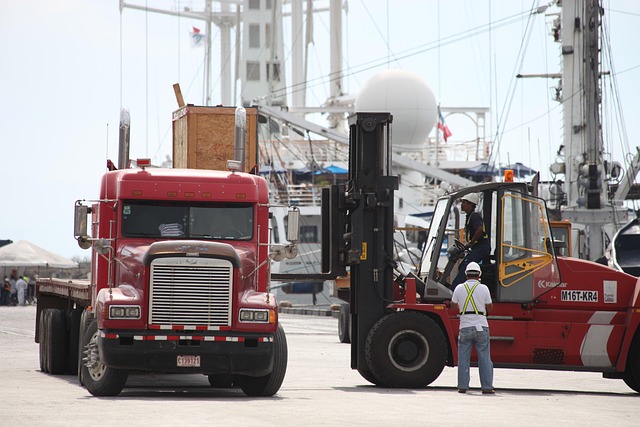Registering a car in California involves understanding specific requirements and gathering essential documents. This comprehensive guide walks you through the entire process, from preparing necessary paperwork for DMV VIN verification to completing the registration at the California Department of Motor Vehicles (DMV). Learn what to expect during the VIN verification check and crucial post-registration steps. By following these detailed instructions, ensure a smooth car registration experience in California.
- Understand the Requirements for Car Registration in California
- Gather Necessary Documents for DMV VIN Verification
- The Step-by-Step Process of Registering Your Vehicle at the DMV
- What to Expect During the VIN Verification Check
- Post-Registration: Important Follow-Up Steps and Considerations
Understand the Requirements for Car Registration in California

Before registering your car in California, it’s crucial to understand the requirements set forth by the Department of Motor Vehicles (DMV). One key step is the DMV vin verification process, which ensures that the vehicle’s unique identifier—the Vehicle Identification Number (VIN)—matches the information on record. This critical inspection includes a thorough check of the VIN to confirm its authenticity and prevent fraud.
Additionally, you’ll need to complete other necessary steps such as passing an emissions test and having valid insurance. A mobile vin verification or vin inspection service can streamline this process by providing convenient, on-site DMV vin verification, making it easier for residents to meet these requirements efficiently.
Gather Necessary Documents for DMV VIN Verification

Before heading to the DMV for car registration, ensure you have all the required documents for a seamless dmv vin verification. This process is crucial to establishing the vehicle’s history and ownership. Gather your car’s registration certificate from the previous state (if applicable), proof of insurance, and a valid driver’s license or state-issued ID. Additionally, you’ll need the Vehicle Identification Number (VIN) from your car, which can usually be found on the vehicle’s title document or on the driver’s side door jamb.
For a more convenient vin inspection, consider using a mobile vin verifier. These services allow you to quickly and easily verify your VIN online or via phone, saving you time and effort. Once you have all the necessary documents and information, you’ll be well-prepared for the dmv vin verification process and can smoothly proceed with registering your vehicle in California.
The Step-by-Step Process of Registering Your Vehicle at the DMV

Registering a car in California involves a straightforward yet precise process at the Department of Motor Vehicles (DMV). Here’s how to do it step-by-step. First, gather all necessary documents, including your vehicle’s registration from the previous state (if applicable), proof of insurance, and a completed application form from the DMV. Next, visit your local DMV office or use their online services for a seamless experience.
Once at the DMV, you’ll need to undergo a VIN verification process. This involves providing your Vehicle Identification Number (VIN) which can be found on your car’s registration papers or the vehicle itself. A mobile vin inspection or using a vin inspection tool during this step ensures accuracy. After confirming your vehicle’s details, you’ll be required to pay the registration fees. Upon completion of these steps, you’ll receive your new California registration plates and official registration documents for your vehicle.
What to Expect During the VIN Verification Check

During the DMV VIN verification process, you can expect a thorough check of your vehicle’s unique identifier—the Vehicle Identification Number (VIN). This 17-character code is like a fingerprint for your car and provides essential information about its make, model, year, and more. A trained inspector will physically inspect the vehicle to ensure it matches the data on file with the DMV. They’ll check the VIN plate, which is typically located on the driver’s side of the dashboard or under the hood, depending on the make and model.
The process involves comparing the visible VIN on the car with the one provided in your registration documents. If you’re opting for a mobile vin inspection or using a mobile vin verifier, the inspector will use specialized equipment to read the code accurately. This step is crucial to ensure that no errors or discrepancies exist, which could impact both your vehicle’s safety and legal registration status.
Post-Registration: Important Follow-Up Steps and Considerations

After successfully registering your vehicle in California, there are several important post-registration steps to ensure a smooth ownership experience. One crucial aspect is completing the DMV VIN verification process. This involves confirming the vehicle’s identification number (VIN) and its authenticity through a comprehensive inspection. You can facilitate this with a mobile vin inspection service, allowing for convenience and efficiency.
Additionally, keeping your registration details up-to-date is essential. Regularly review and update any changes in ownership, address, or contact information. Remember, timely updates are vital to maintain compliance with California’s vehicle registration regulations. This ensures that you remain legally registered and avoid potential penalties.
Registering a car in California involves understanding key requirements, gathering essential documents for DMV VIN verification, and following a straightforward step-by-step process. Once your vehicle passes the VIN verification check, you’ll receive your registration and license plate, marking a successful completion of the process. Remember to conduct post-registration follow-up steps like updating insurance records and ensuring compliance with local regulations to keep your vehicle legally registered and roadworthy.
